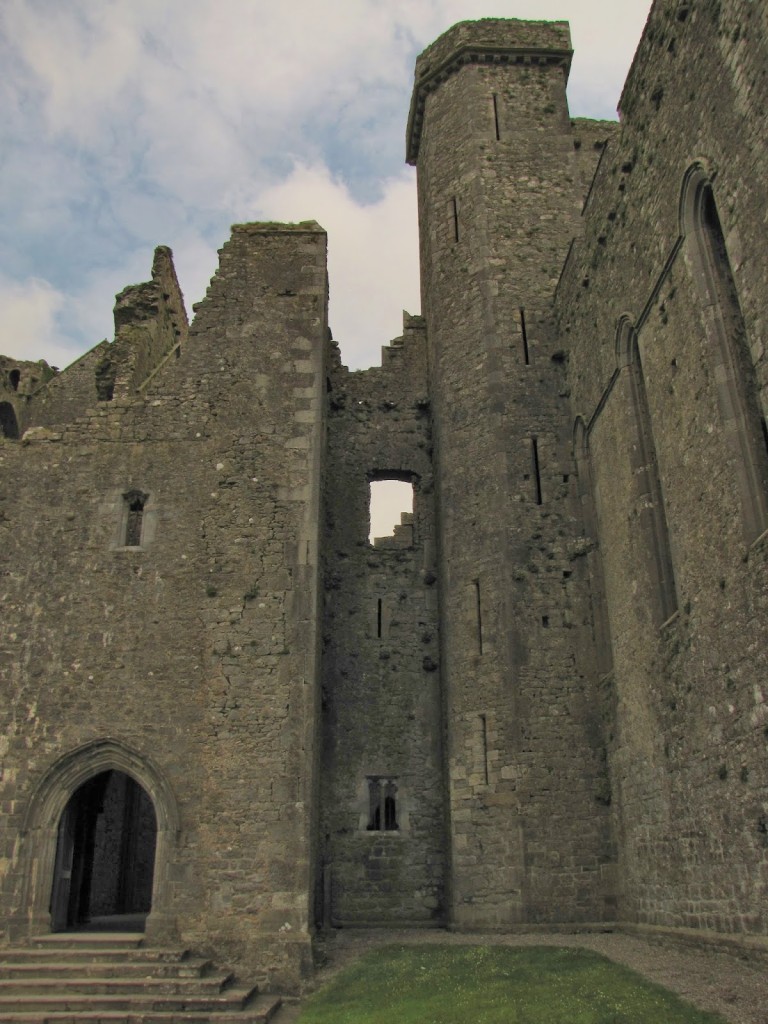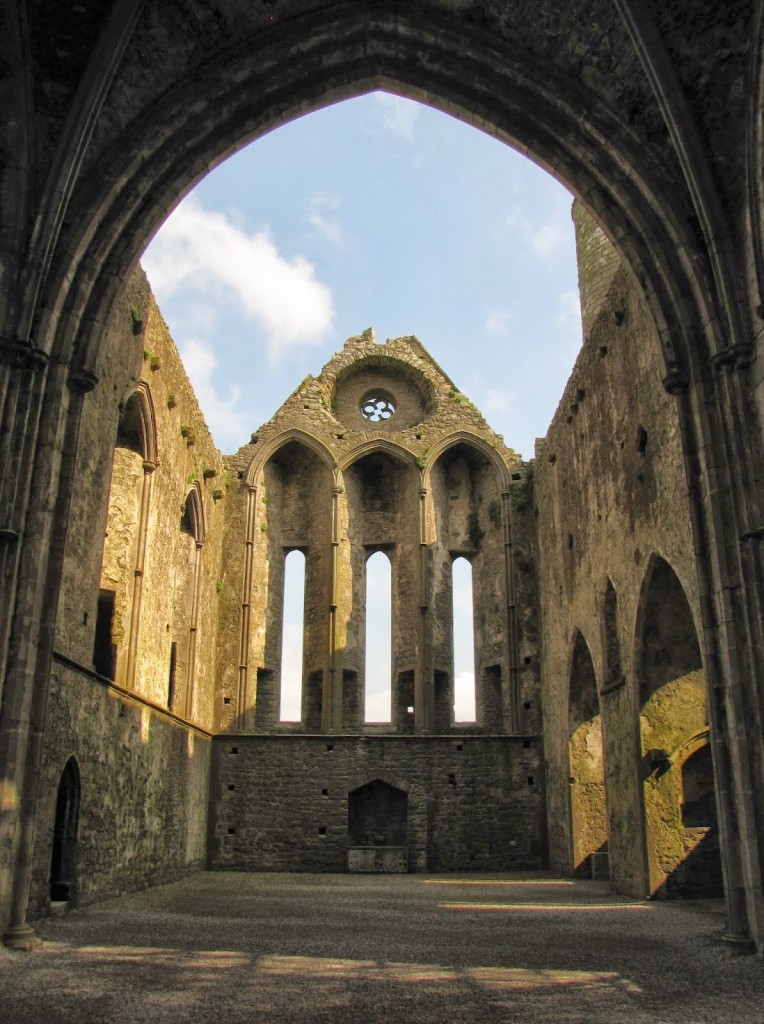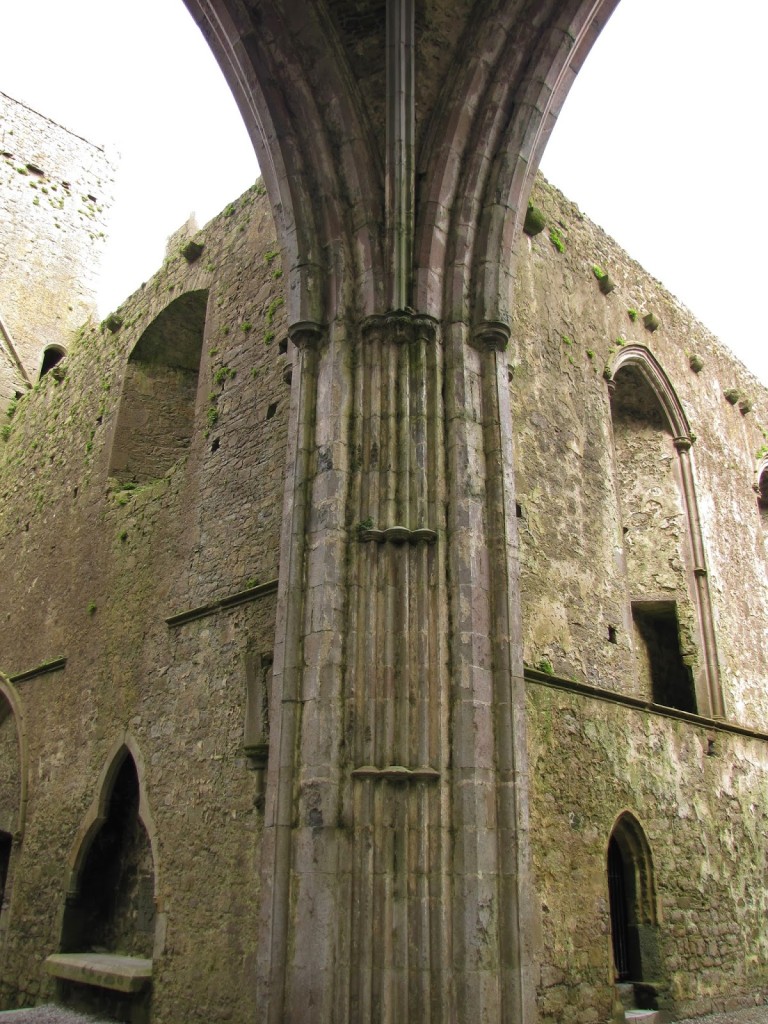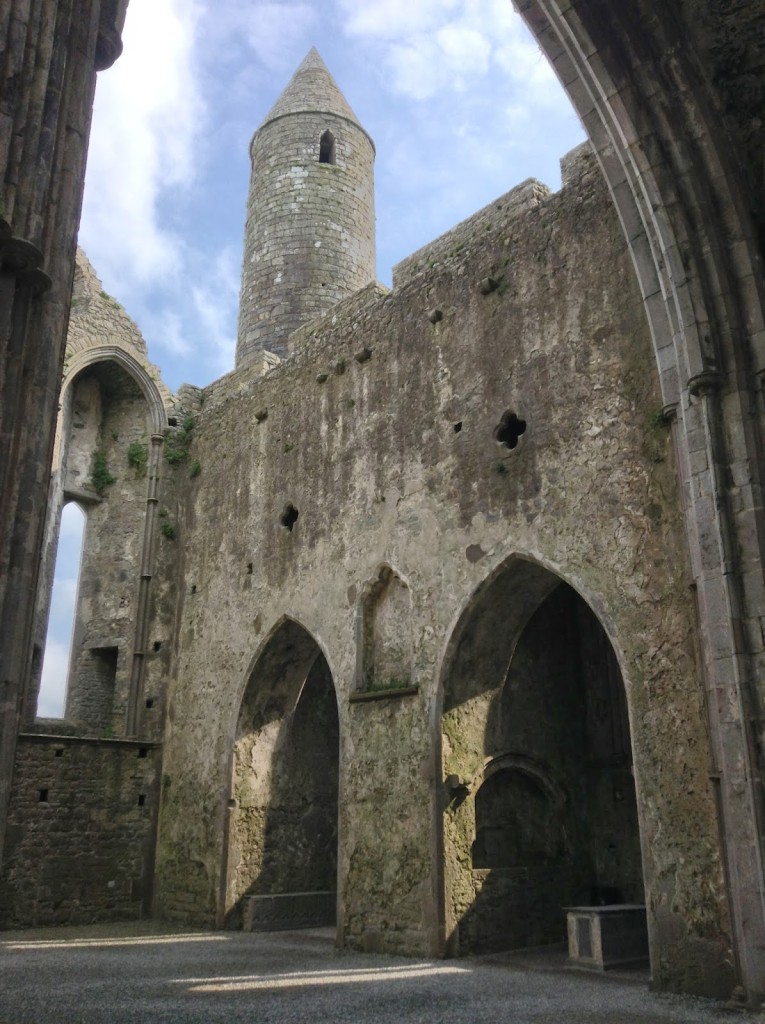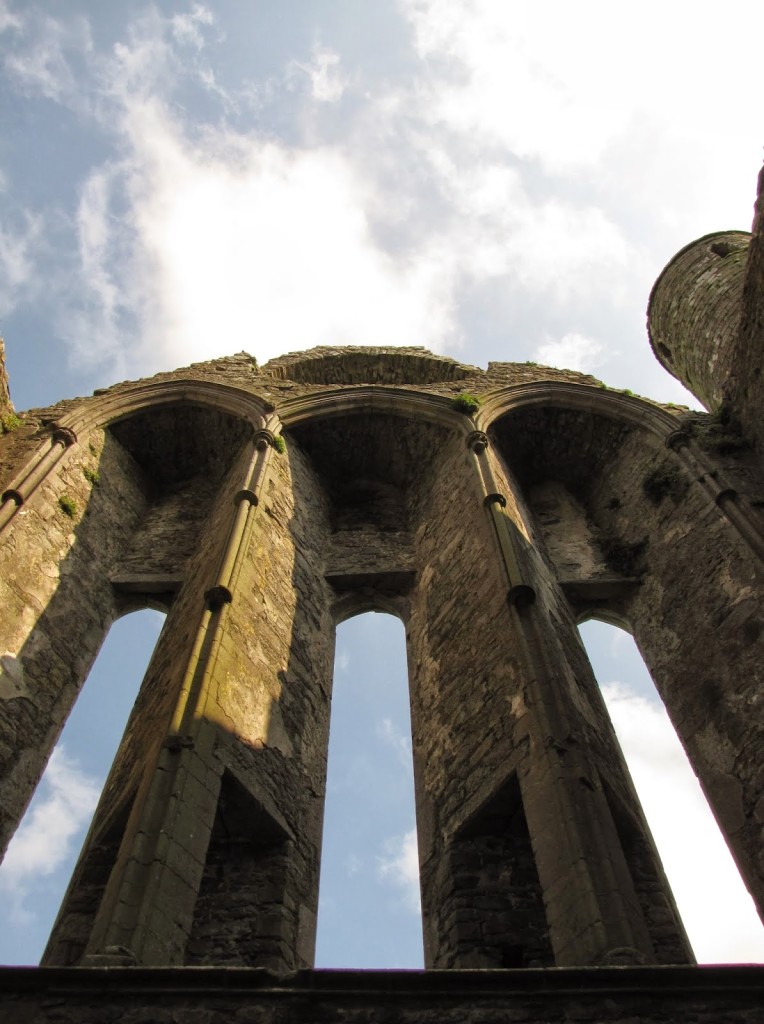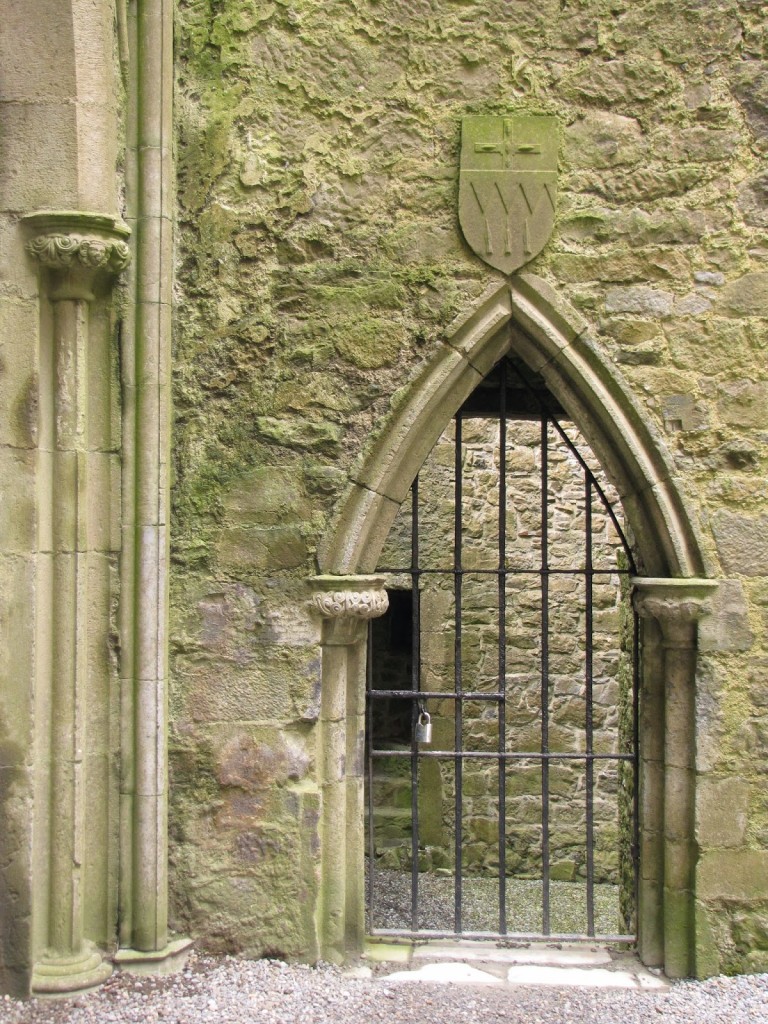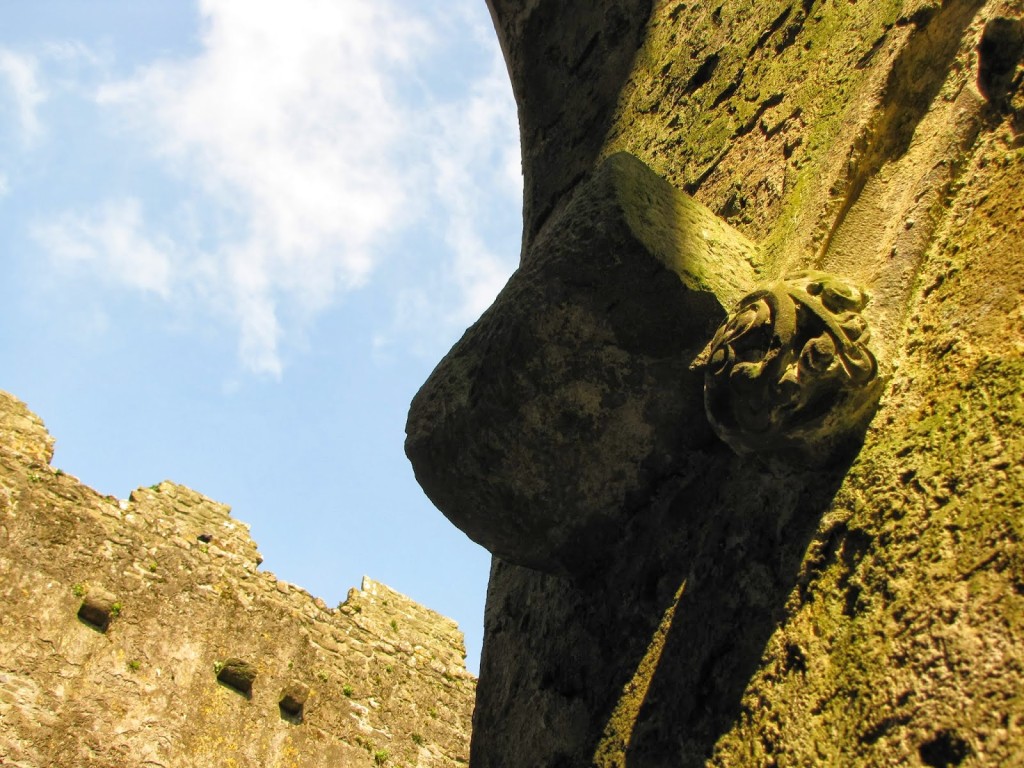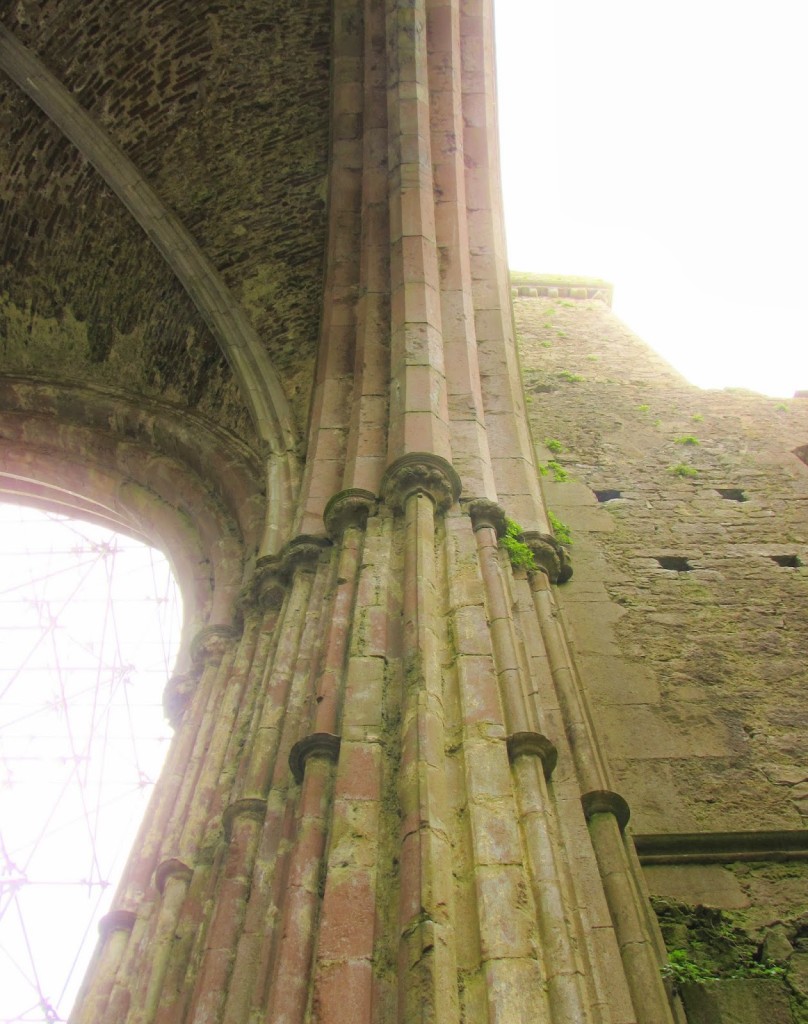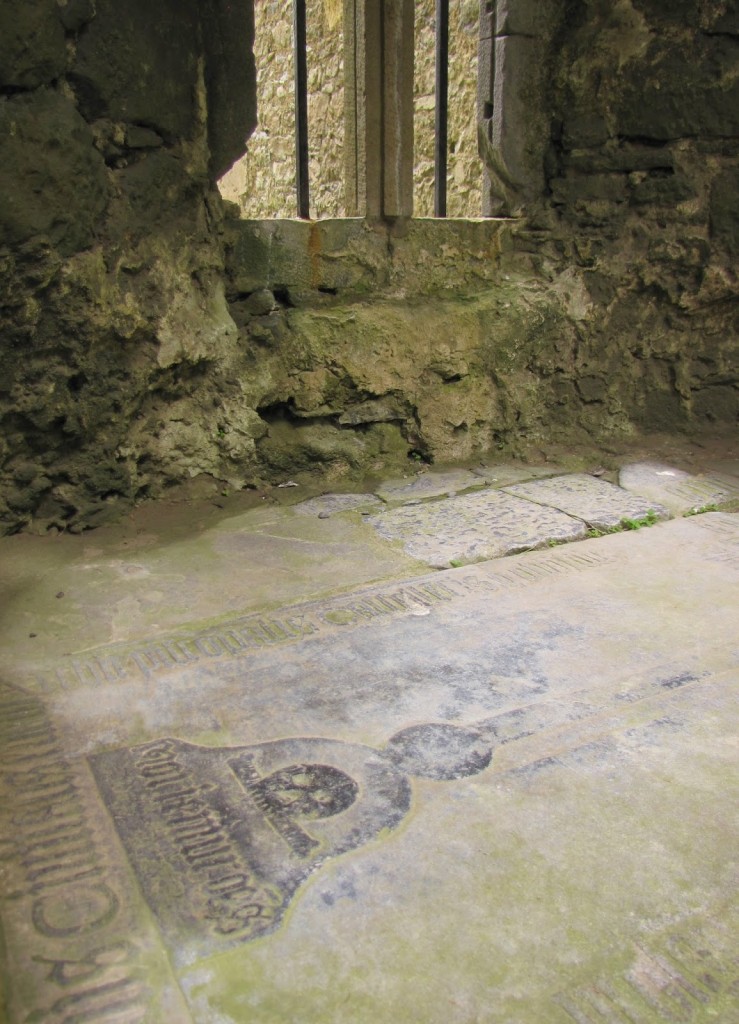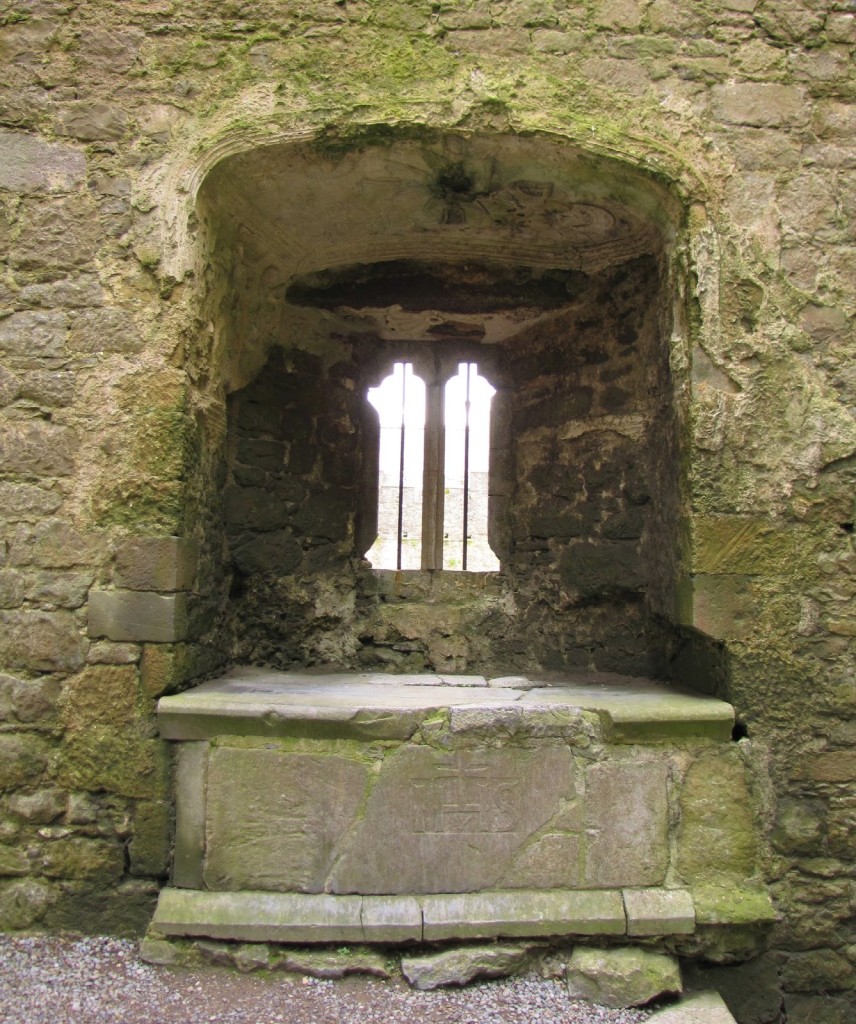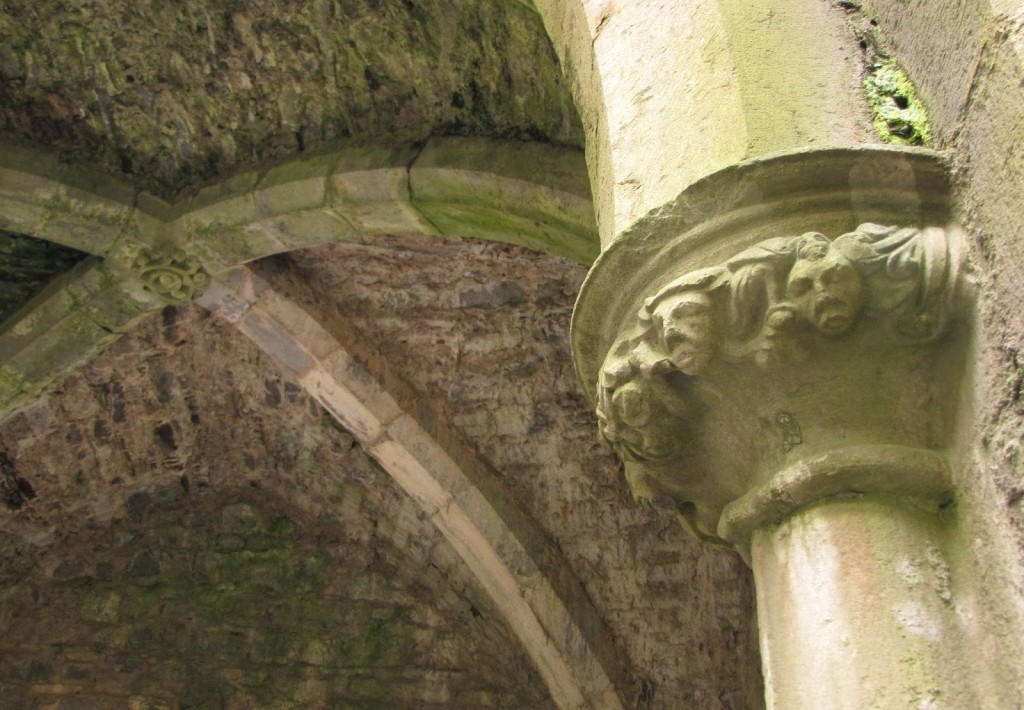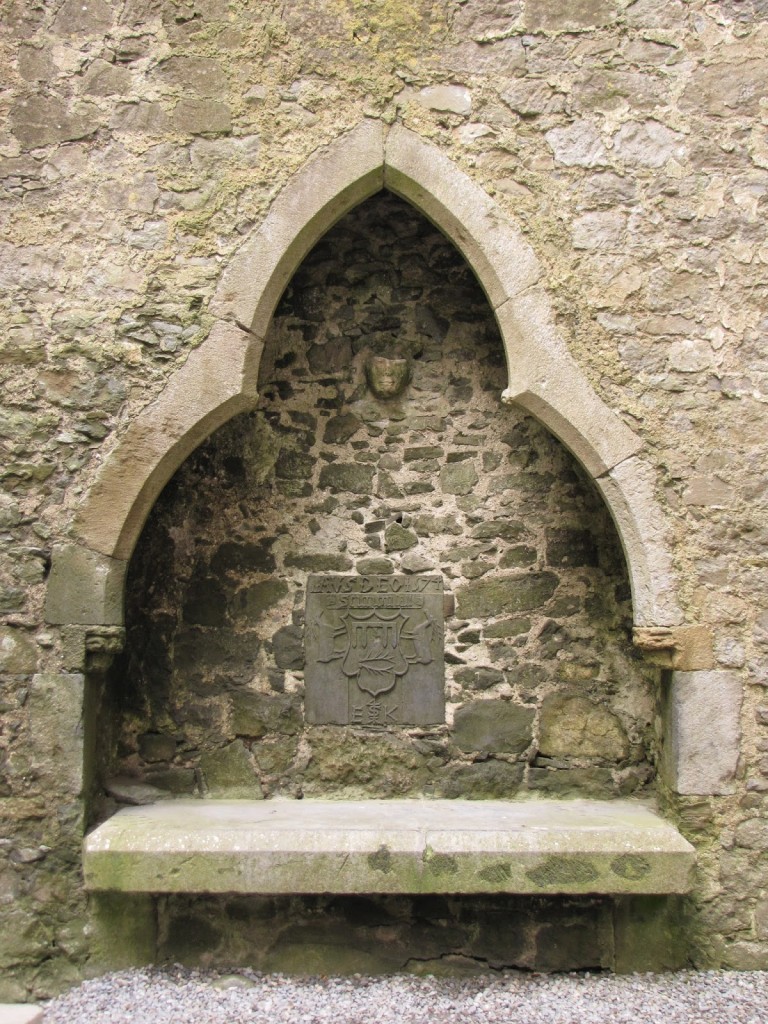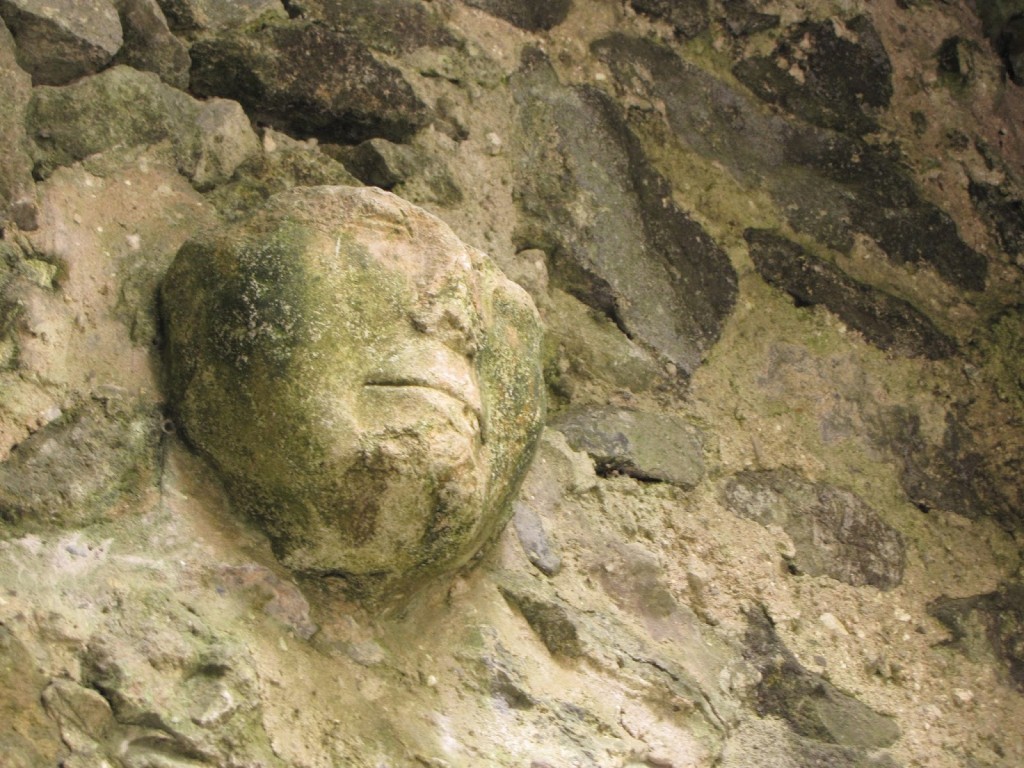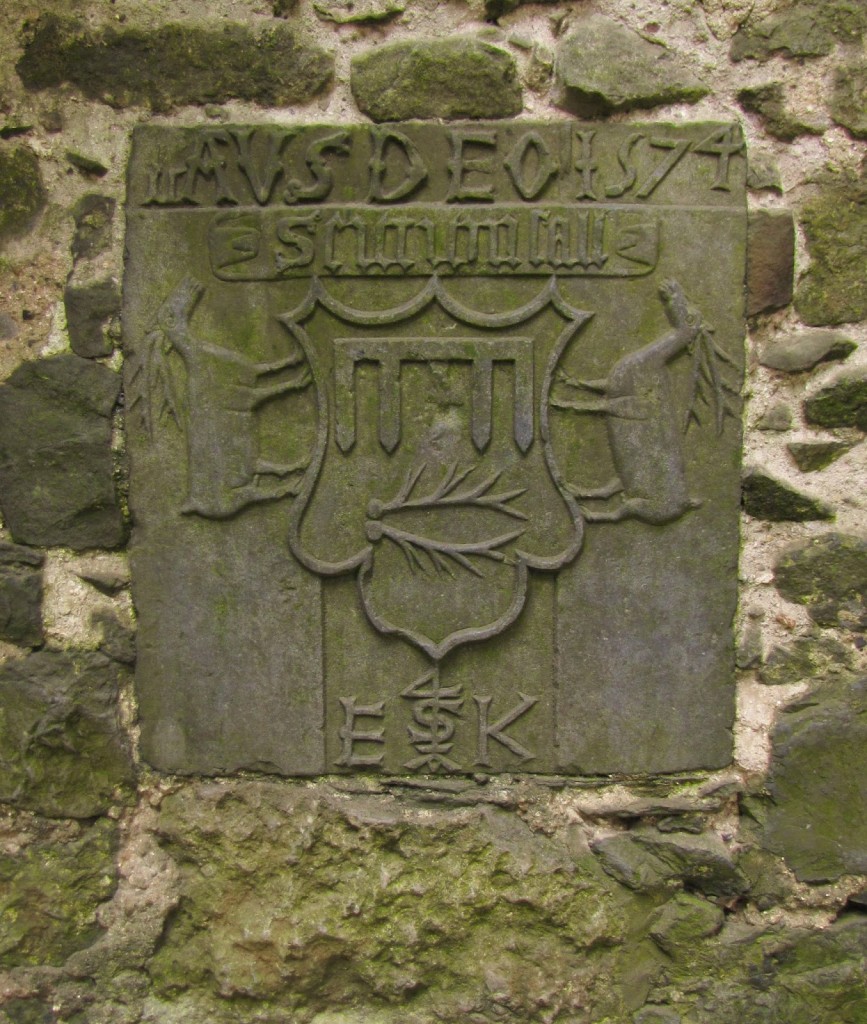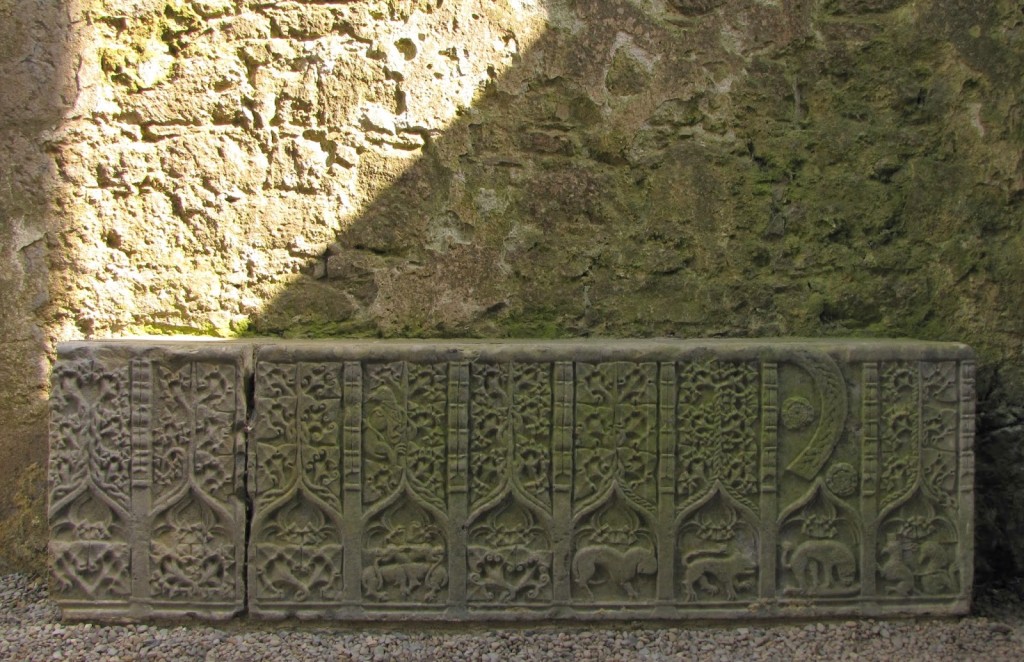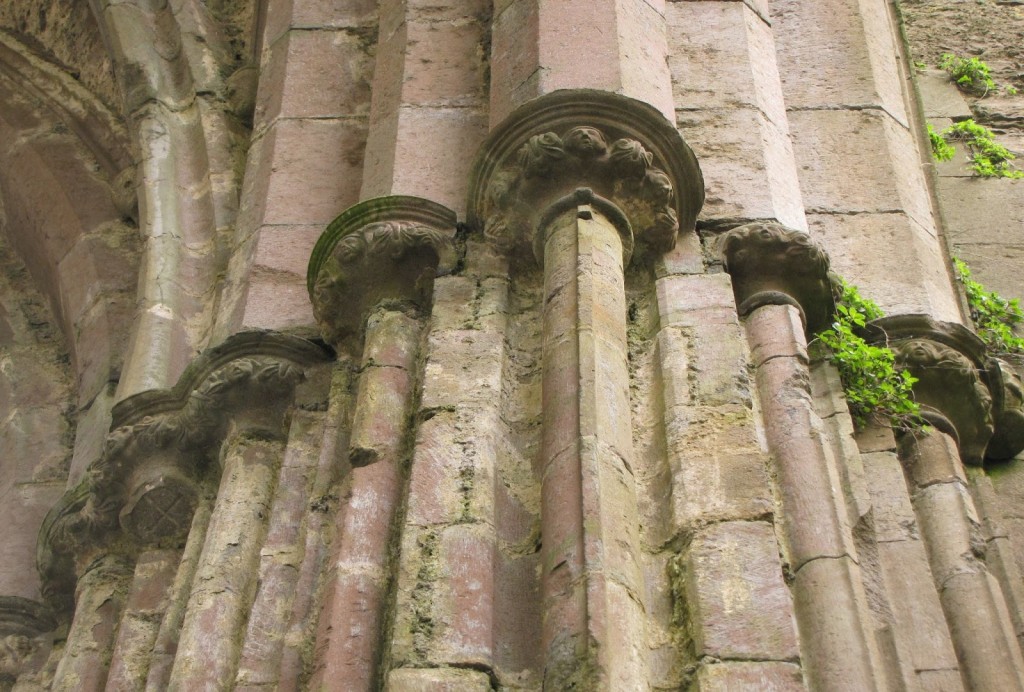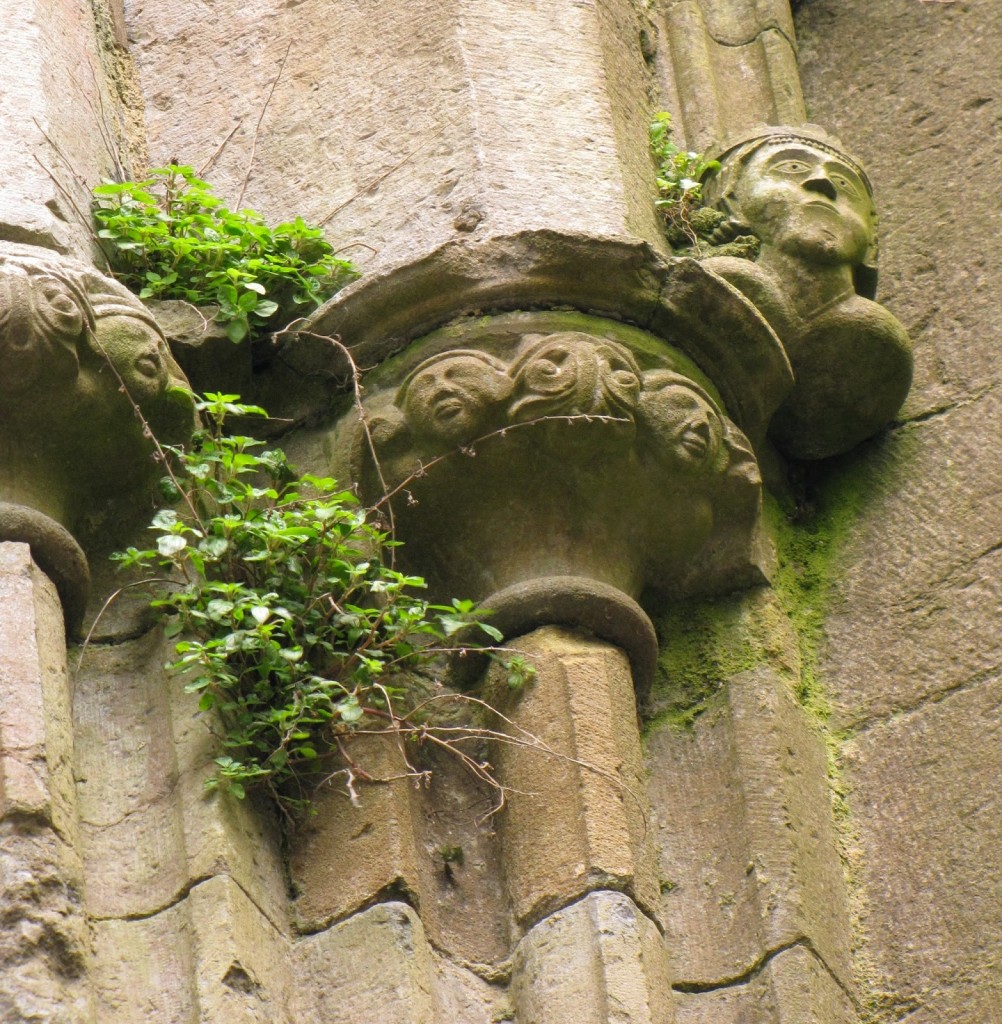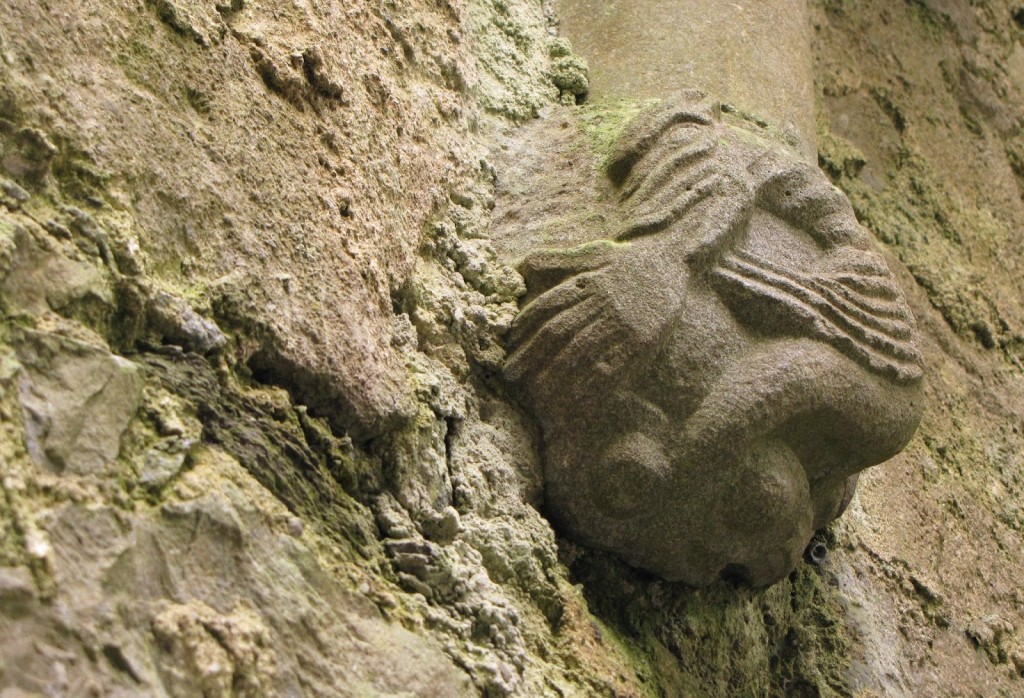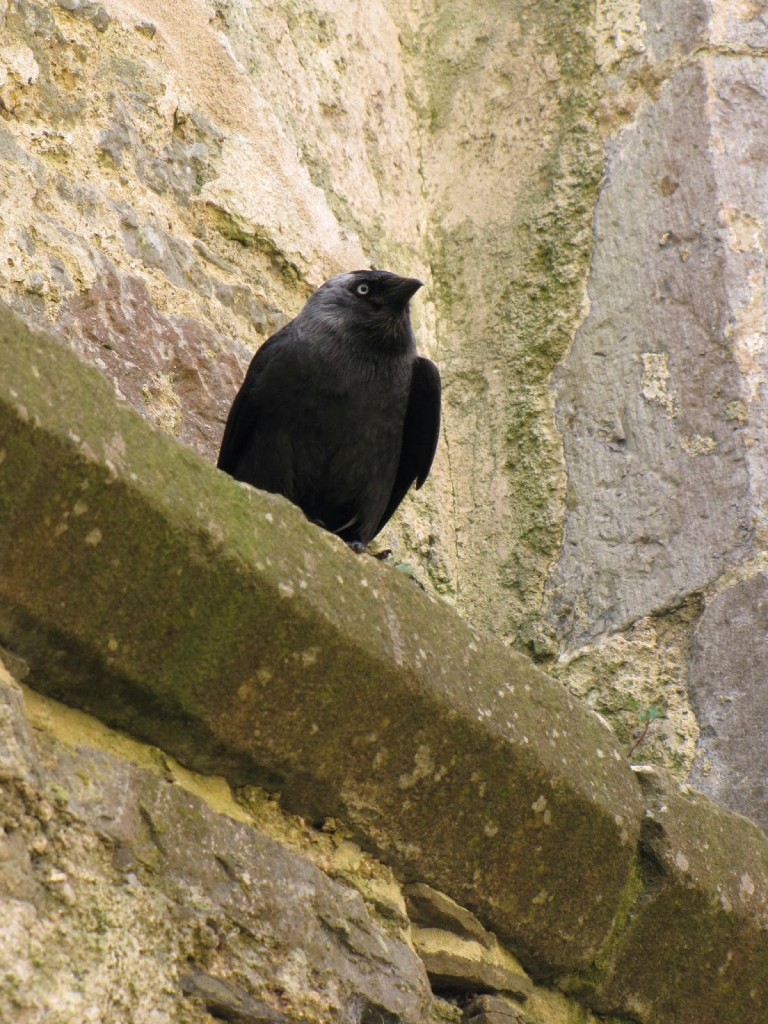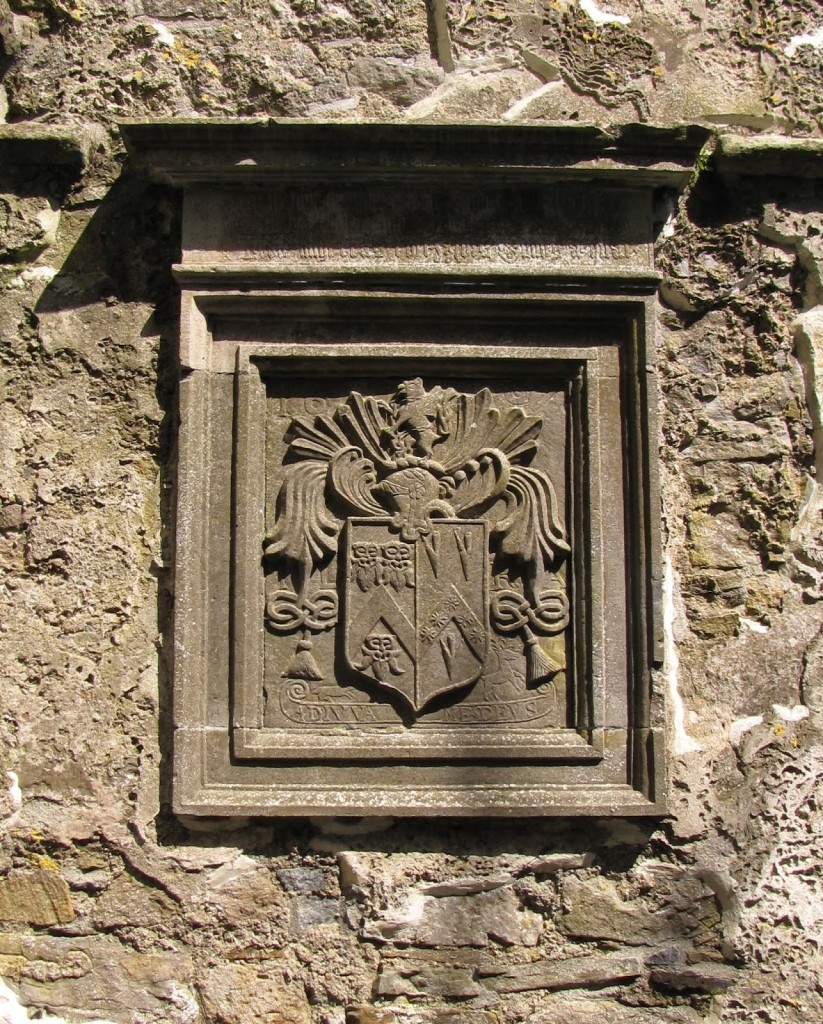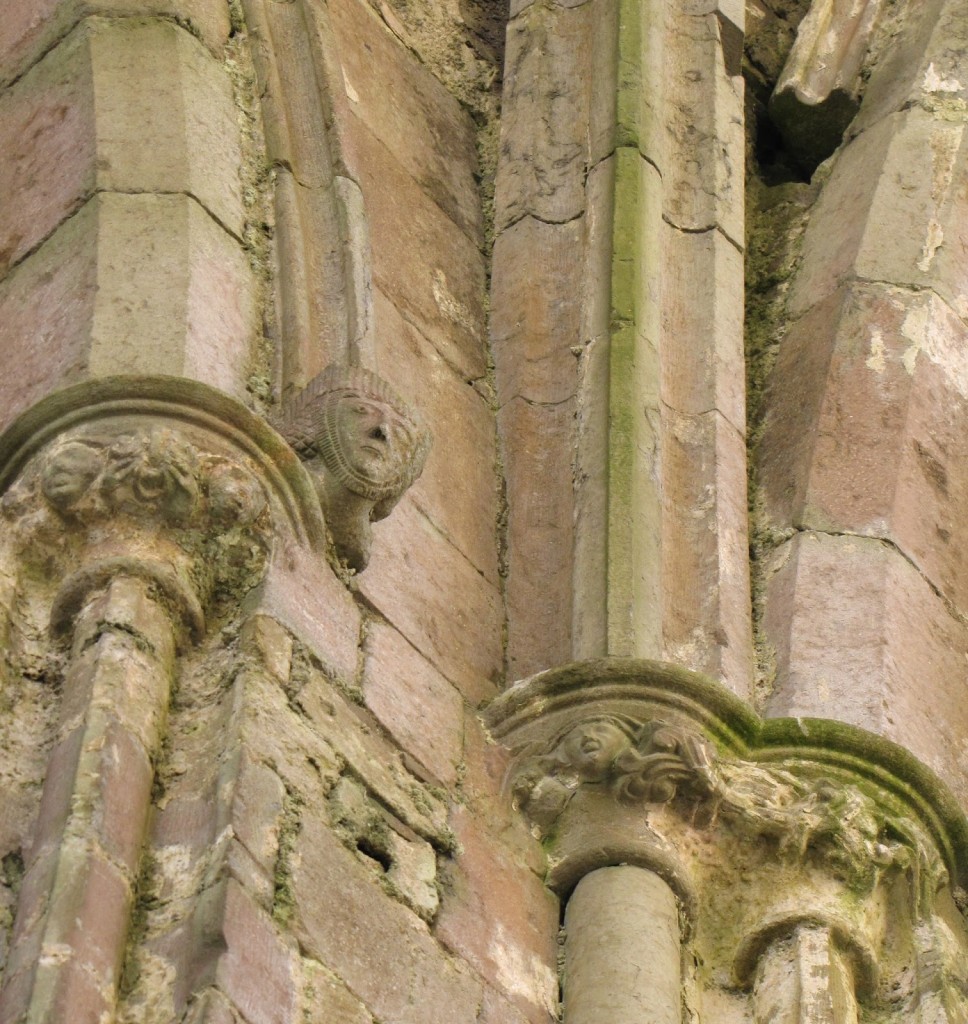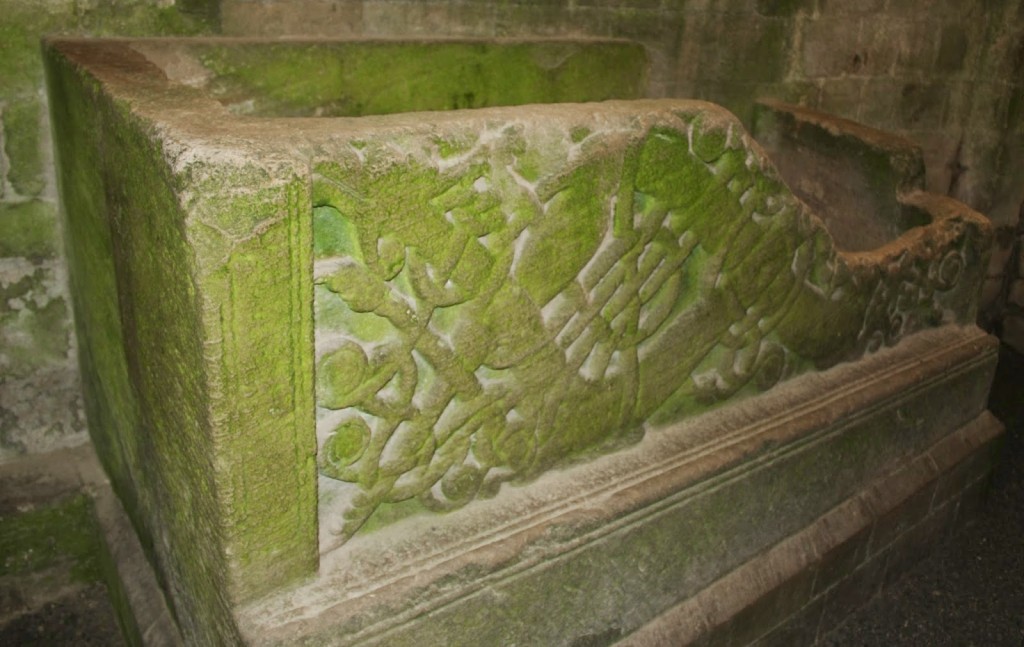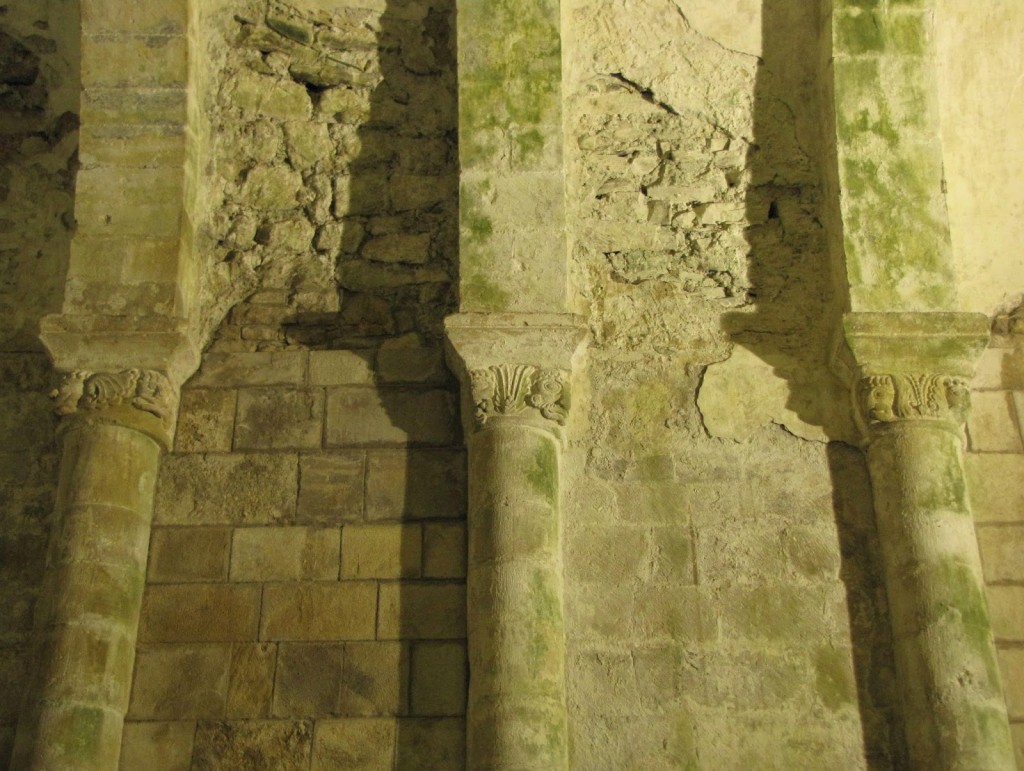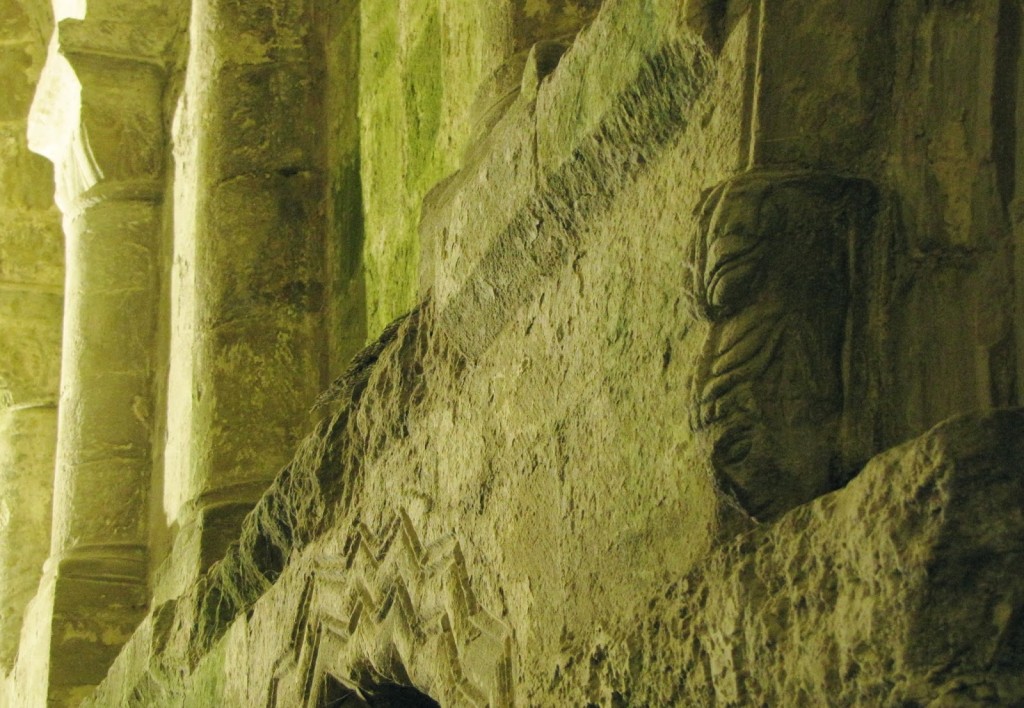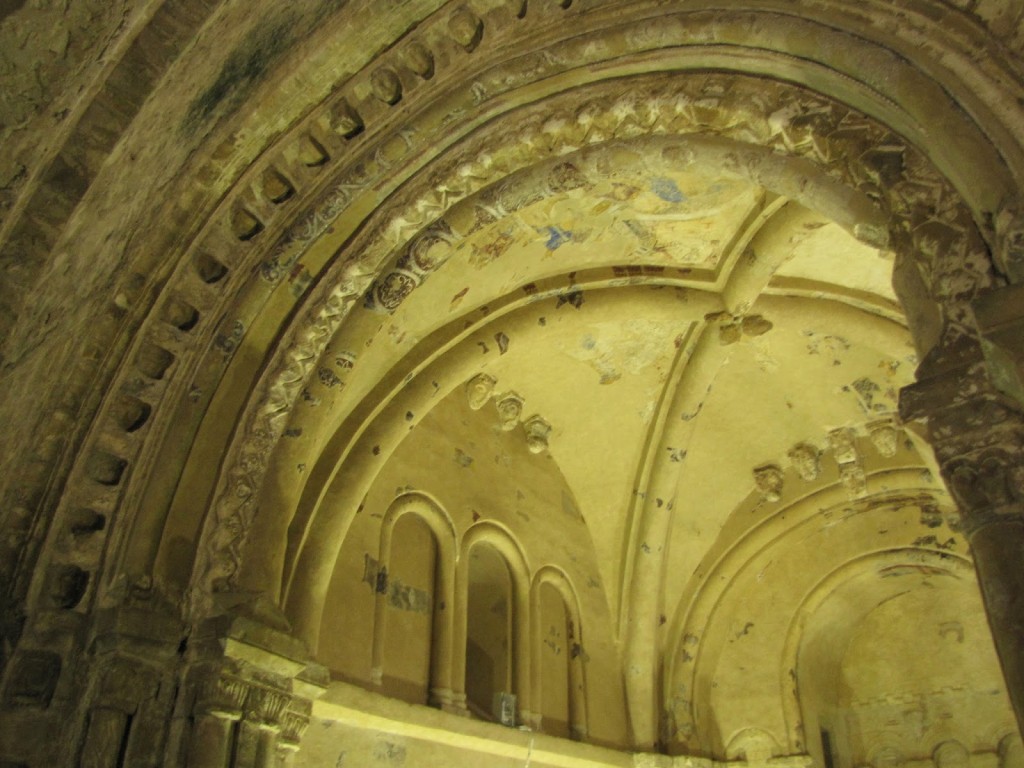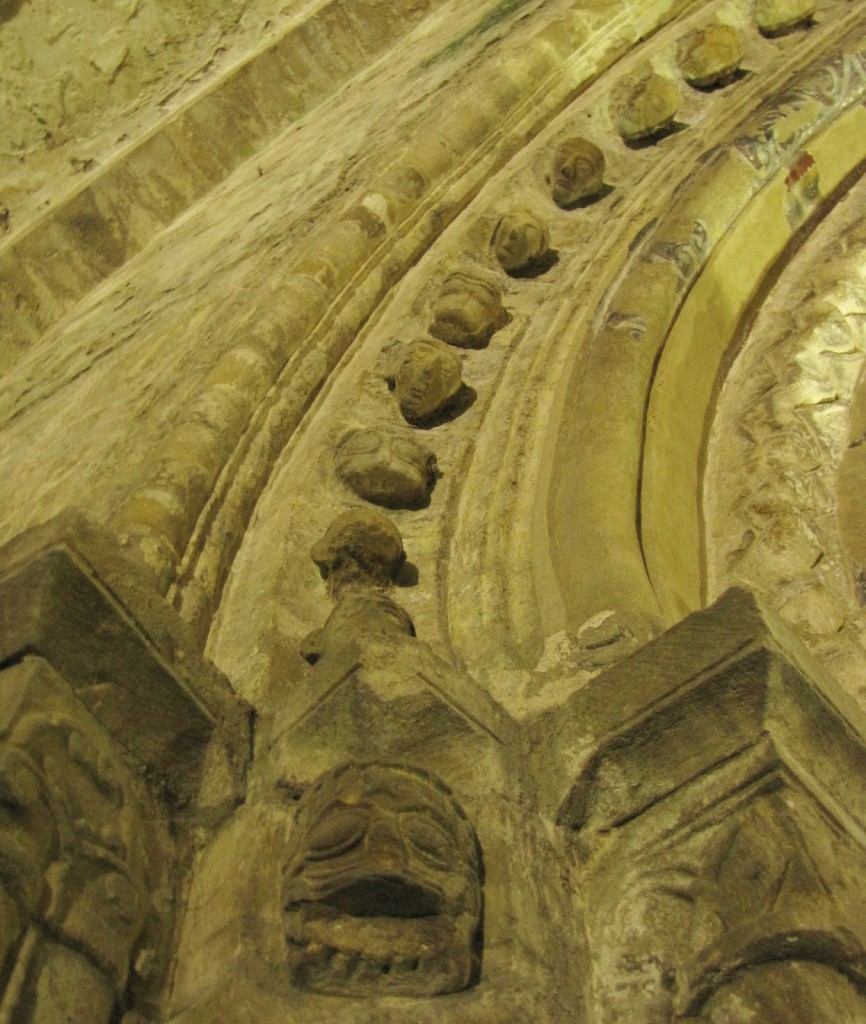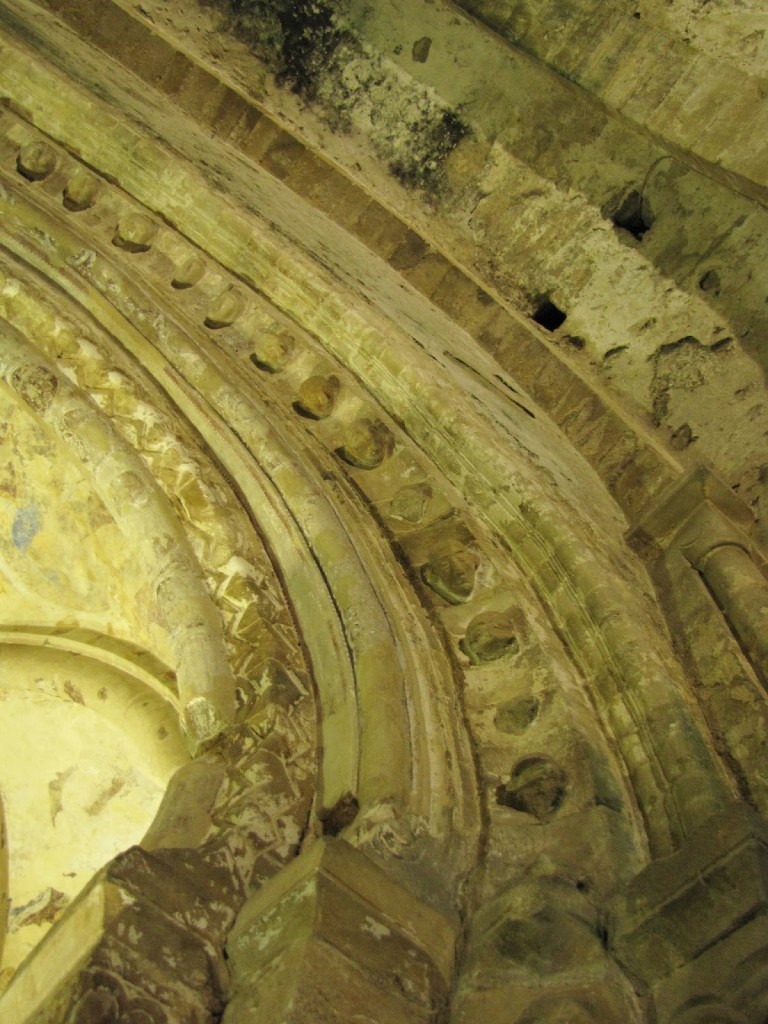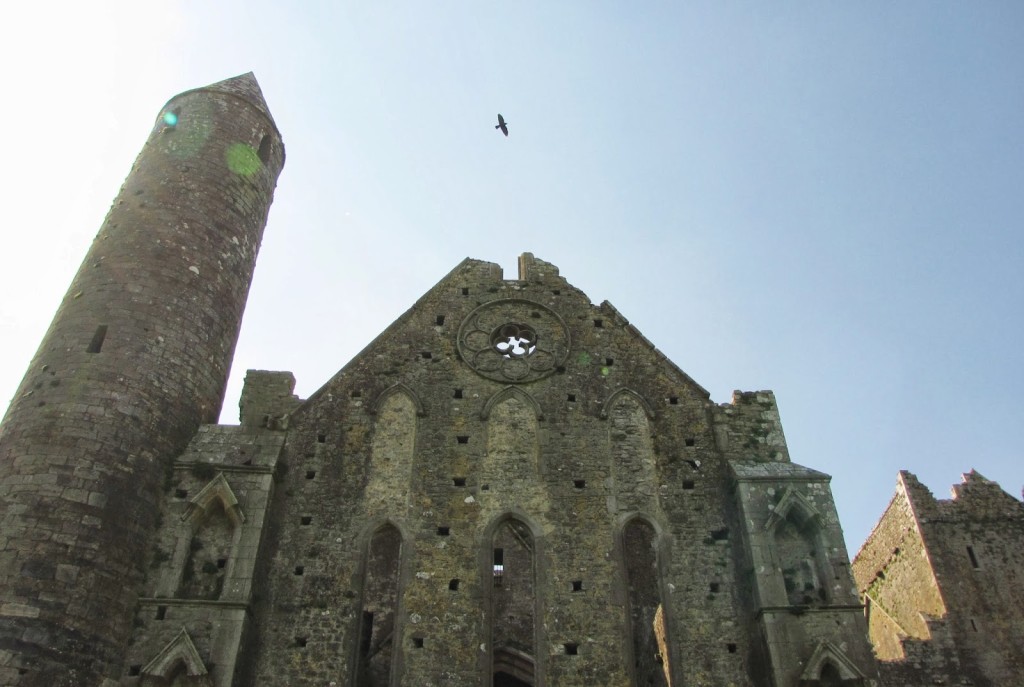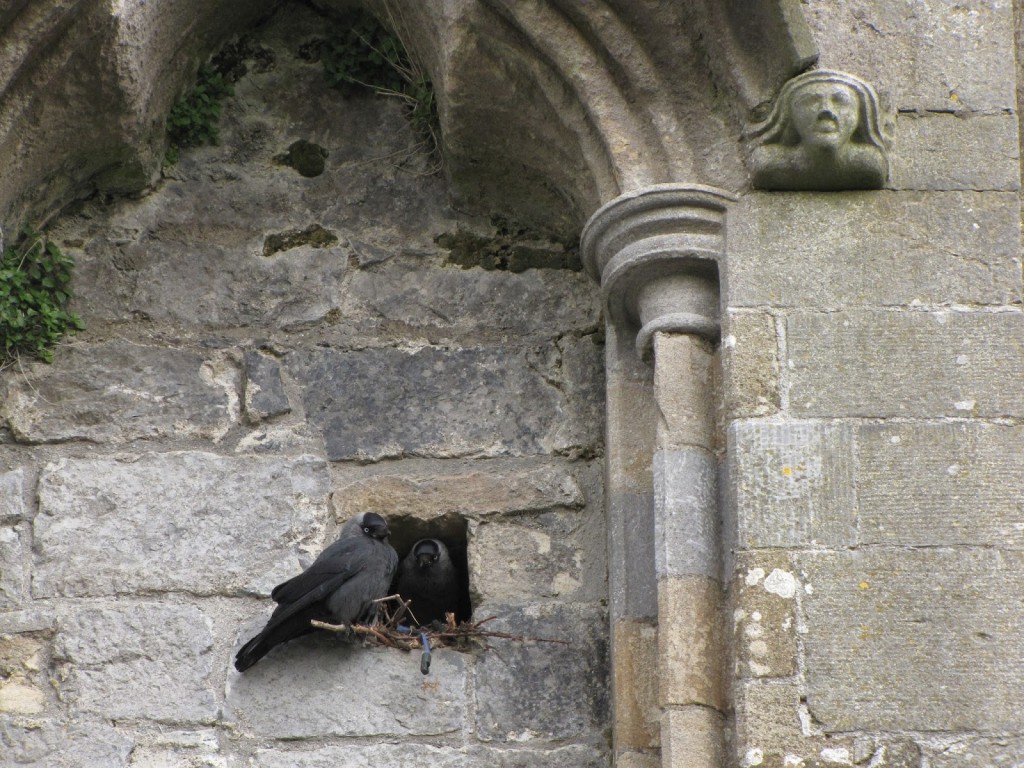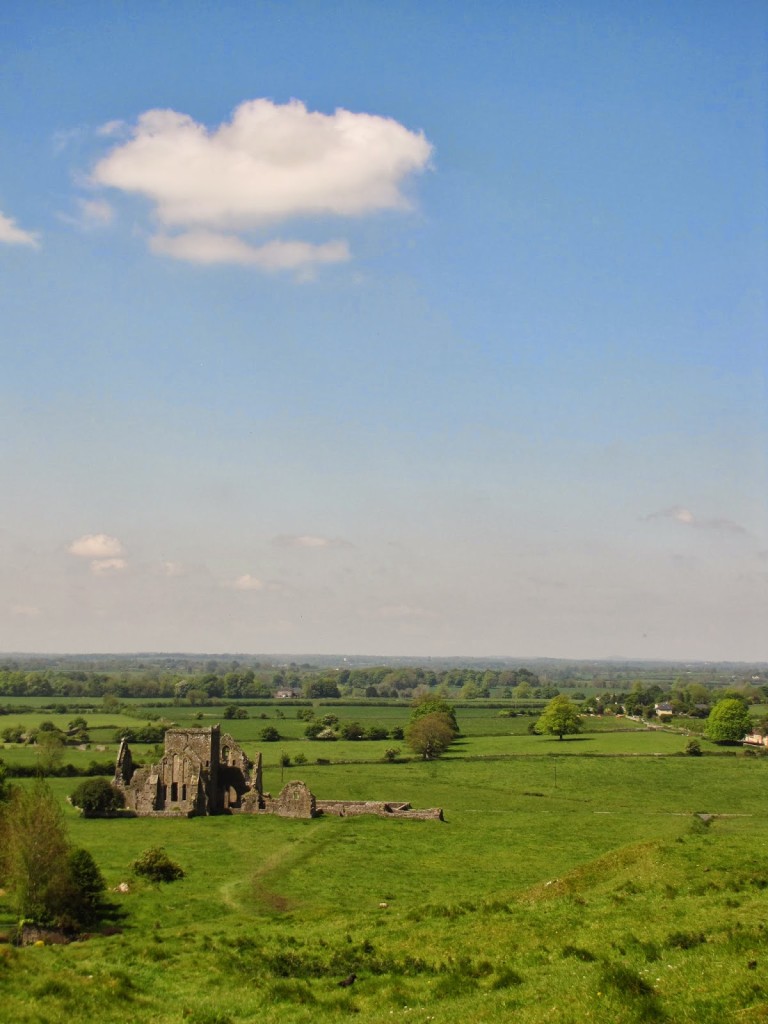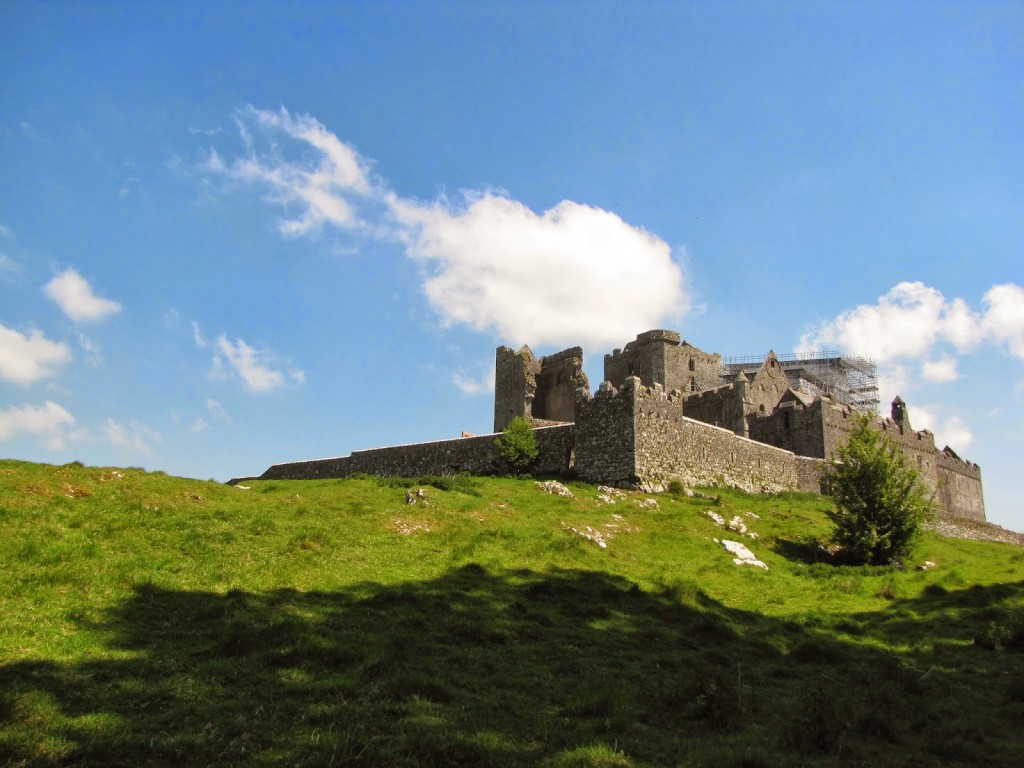
We left Blarney as the castle and grounds were closing and made our way northeast to Cashel, arriving before nightfall. Castle-hotels are among Cashel’s many attractions, but we chose to stay at Peggy O’Neill’s B&B, one of the town’s less costly options. Our friendly host offered us the choice of two rooms: one that was large and pleasant, the other that was small and had the following view:
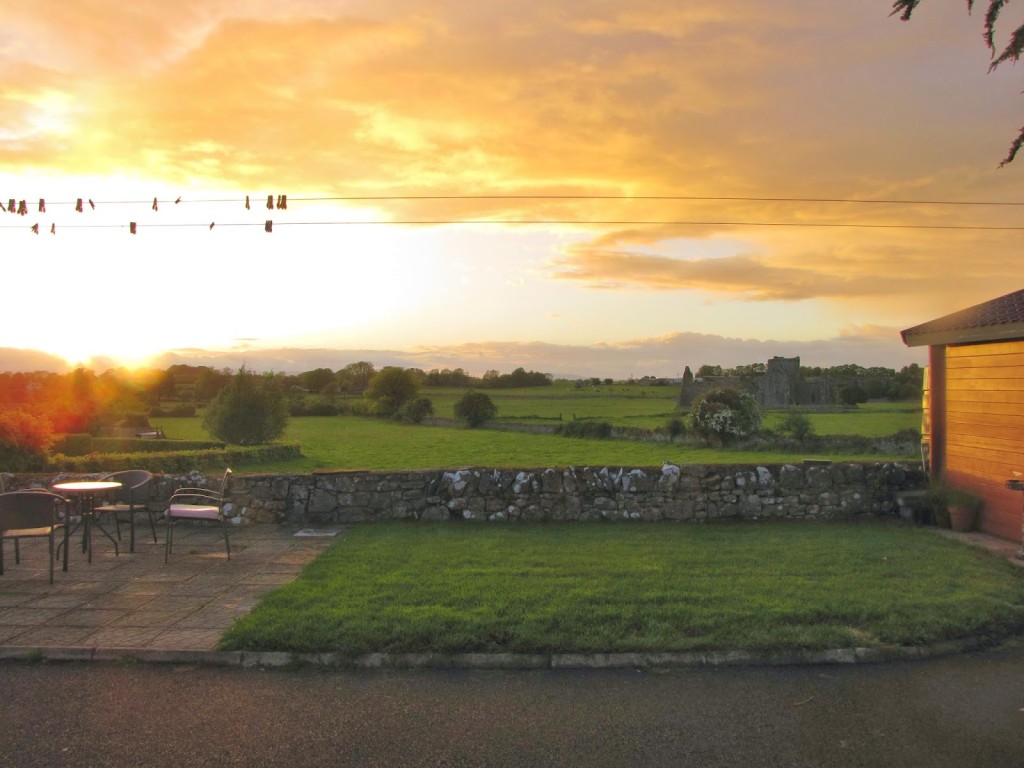
We chose the smaller room.
Of course, Cashel’s main draw is its medieval stronghold and namesake, the Rock of Cashel. Perched at the city’s highest point, Rock of Cashel impresses with its blocky enormity and abundance of carved decoration. The fortress’s English name is a bit confusing, as it implies the building is in some way the “rock” of the town. In fact, Cashel is the anglicized version of the Irish caiseal, or stone fort, while “Rock” refers to the hill it sits upon.
Although the site itself dates to the 4th or 5th century when it was seat of the Kings of Munster, the oldest remaining structure is the round tower, which was erected shortly after Muircheartach Ua Briain (O’Brien) gave the Rock to the Catholic Church in 1101. Like most round towers, it was originally a free-standing structure. However, it was later incorporated into the north transept when the cathedral was built in the 13th century.
Art historically, the complex’s most distinctive feature is Cormac’s Chapel, the interior of which contains unusual sculptural details, vestiges of painted decoration, and an intricately carved tomb. Consecrated in 1134, the Chapel may be the first Romanesque church in Ireland, and is certainly the best preserved. Cormac Mac Cárthaigh (MacCarthy), a bishop and king of Munster, commissioned the building. The sarcophagus, which boasts an elaborate Scandinavian Urnes design of intertwined animals, probably held either Cormac’s remains or those of his brother, Tadhg. The frescoes—a rare feature in Ireland—are the oldest on the island. They were covered in the 16th century during the Reformation and only rediscovered in the 1980s. Restoration of the chapel is ongoing, and access is restricted to groups led by the site’s guides. These tours are free, entertaining, and informative, but if you prefer to spend the rest of your time exploring on your own, you can join the group for the chapel portion of the tour only.
